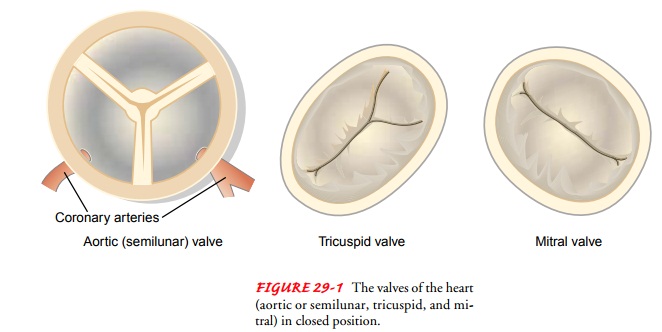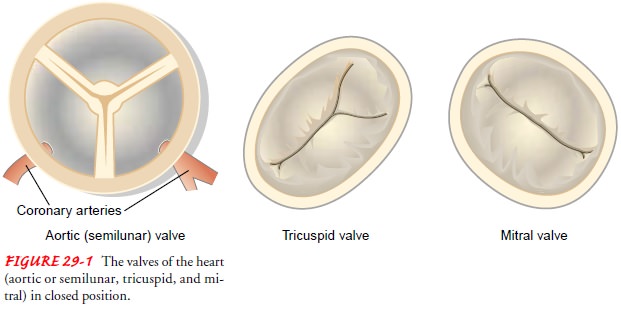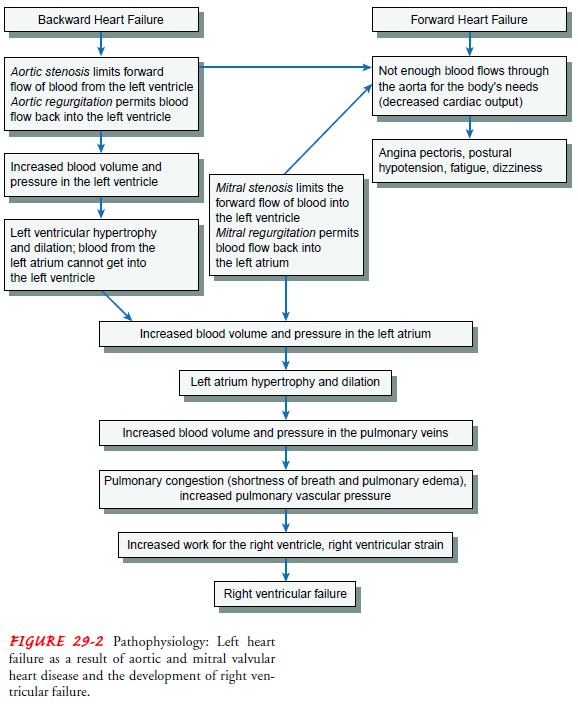Chapter: Medical Surgical Nursing: Management of Patients With Structural, Infectious, and Inflammatory Cardiac Disorders
Acquired Valvular Disorders

Acquired Valvular Disorders
The valves of the heart control the flow
of blood through the heart into the pulmonary artery and aorta by opening and
closing in response to the blood pressure changes as the heart contracts and
relaxes through the cardiac cycle. The atrioventricular valves separate the
atria from the ventricles and include the tricuspid valve, which separates the
right atrium from the right ventricle, and the mitral valve, which separates
the left atrium from the left ventricle. The tricuspid valve has three
leaflets; the mitral valve has two. Both valves have chordae tendineae that
anchor the valve leaflets to the papillary muscles and ventricular wall. The semilunar valves are located between
the ventricles and their corresponding arteries. The pulmonic valve lies
between the right ventricle and the pulmonary artery; the aortic valve lies
between the left ventricle and the aorta. Figure 29-1 shows valves in the
closed position.When any of the heart valves do not close or open properly,
blood flow is affected. When valves do not close completely, blood flows
backward through the valve in a process called regurgitation. When valves do
not open completely, a condition called stenosis, the flow of blood through the
valve is reduced.Disorders of the mitral valve fall into the following
categories: mitral valve prolapse (ie, stretching of the valve leaflet into
theatrium during systole), mitral regurgitation, and mitral stenosis.Disorders
of the aortic valve are categorized as aortic regurgitation and aortic
stenosis. These valvular disorders lead to various symptoms that, depending on
their severity, may require surgical repair or replacement of the valve to
correct the problem (Fig. 29-2). Tricuspid and pulmonic valve disorders also
occur, usually with fewer symptoms and complications. Regurgitation and
stenosis may occur at the same time in the same or different valves.


Related Topics